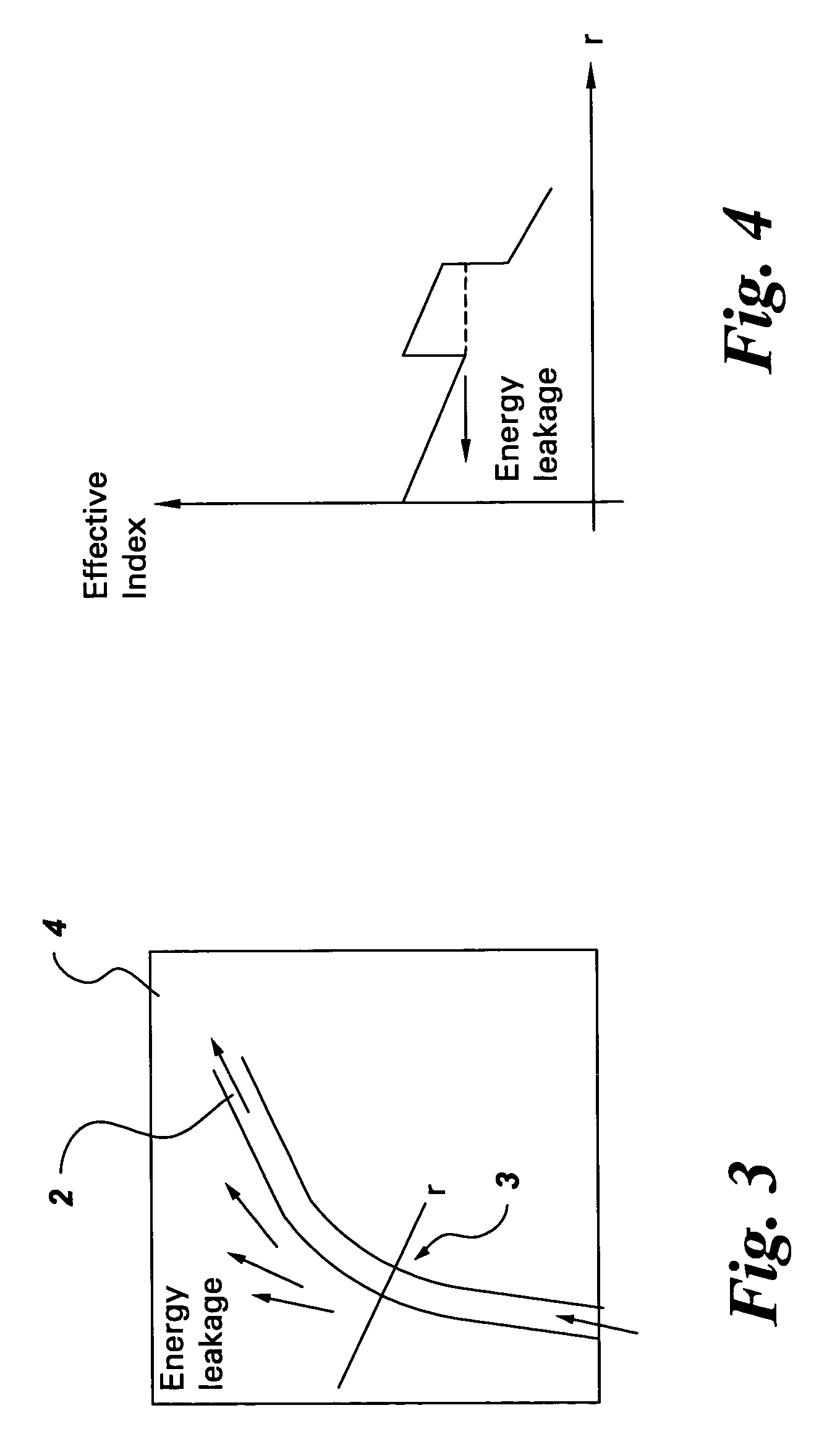Index contrast enhanced optical waveguides and fabrication methods
a technology of optical waveguides and fabrication methods, applied in the field of optical waveguides, can solve the problems of reducing the performance of optical waveguides, requiring complicated optimization and costly design processes, and providing relatively limited enhancements, so as to reduce the loss and tighten the bend
- Summary
- Abstract
- Description
- Claims
- Application Information
AI Technical Summary
Benefits of technology
Problems solved by technology
Method used
Image
Examples
example 1
[0054]Into a suitable clean glass container, 60 grams of low color grade polysulfone polymer (Udel P-3703, available from Solvay Advanced Polymers, Alpharetta, Ga.) was added along with 200 grams of anhydrous anisole. The blend was warmed to about 50° C. and mixed for about 24 hours to dissolve the polymer. To this mixture was added 40 grams of CY179 cycloaliphatic epoxy resin (available from Vantico Inc, Brewster N.Y.), 0.8 gram of Cyracure UVI-6976 UV catalyst (available from Dow Chemical Co. Midland, Mich.), and 0.4 gram of Irganox 1010 antioxidant (available from Ciba Specialty Chemicals, Tarrytown, N.Y.). The mixture was blended to completely intermix all components and filtered prior to use through a nominal 0.5-micron membrane filter to give the polymerizable composite. A 6-micron thick film of the polymerizable composite was prepared on a glass substrate by spin coating the material at 3000 revolutions per minute (rpm) for 30 seconds and heating on a hotplate 4 minutes at 80...
example 2
[0055]Into a glass container, capable of being sealed under vacuum, was distilled 19 grams of tetrafluoropropyl methacrylate, followed by addition of 56 grams of methyl methacrylate, 93 grams of cyclohexanone, 0.15 gram of N-dodecanethiol, and 0.19 gram of benzoyl peroxide. The mixture was degassed and sealed under vacuum. After being heated with mixing at about 75° C. for about 24 hours, followed by further heating at about 80° C. for about 24 hours, the resulting mixture was cooled and treated with 55.5 grams of anisole. The resulting blend was a viscous, clear, and colorless acrylate copolymer consisting of about 75% poly(methyl methacrylate) and 25% poly(tetrafluoropropyl methacrylate), present as 33.5% solids in the cyclohexanone-anisole mixed solvent. An additional 10.7 grams of anisole, 8 grams of CY179 epoxy monomer, 0.15 gram of Irganox 1010, and 0.13 gram of Cyracure UVI-6976 were added to a 35-gram portion of the blend. The resulting polymerizable composite contained abou...
PUM
| Property | Measurement | Unit |
|---|---|---|
| thicknesses | aaaaa | aaaaa |
| thicknesses | aaaaa | aaaaa |
| thick | aaaaa | aaaaa |
Abstract
Description
Claims
Application Information
 Login to View More
Login to View More - R&D
- Intellectual Property
- Life Sciences
- Materials
- Tech Scout
- Unparalleled Data Quality
- Higher Quality Content
- 60% Fewer Hallucinations
Browse by: Latest US Patents, China's latest patents, Technical Efficacy Thesaurus, Application Domain, Technology Topic, Popular Technical Reports.
© 2025 PatSnap. All rights reserved.Legal|Privacy policy|Modern Slavery Act Transparency Statement|Sitemap|About US| Contact US: help@patsnap.com



